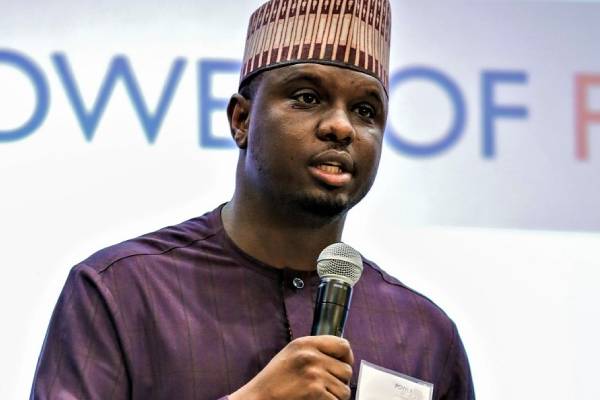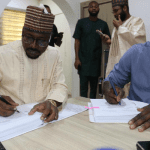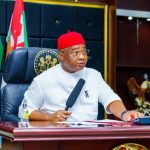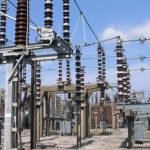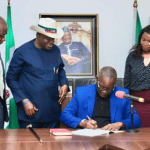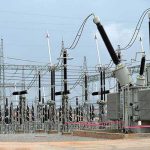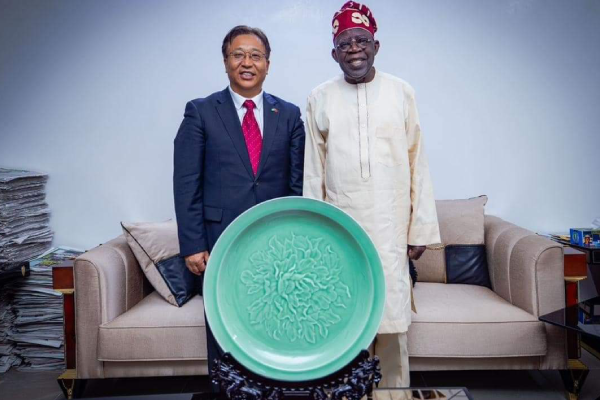The Rural Electrification Agency (REA) has signed 267 agreements worth 395 million dollars to provide electricity for the unserved and underserved Nigerians under the Nigeria Electrification projects (NEP).
So far, the project has provided power for about five million people across the Country.
The Nigerian Electrification Project (NEP) which is a federal government scheme designed in 2018 with the World Bank, the African Development Bank (AfDB), and other partners, to provide energy access to under- and unserved communities in Nigeria using renewable sources has been providing Power to the unserved or underserved.
It is a private sector-driven nationwide initiative implemented by the country’s Rural Electrification Agency (REA) and started by the Former Managing Director of the Rural Electrification Agency, Mrs Damilola Ogunbiyi.
Its Current Managing Director, Ahmad Salihijo Ahmad, had earlier in a statement said that the programme was expected to provide off-grid reliable and clean electricity supply to 705,000 households, 90,000 micro, small and medium enterprises, 100 isolation and treatment centres and 400 primary healthcare centres in unserved and underserved areas of the country.
Mr Ahmad explains that over the years, the Rural Electrification Agency has moved from just being an implementer of Federal Government’s projects in the sector to becoming a hub and enabler of business in the power sector.
He explains that the agreements signed by the Rural Electrification Agency with private developers have led to over a million connections across the country and has also served an employment generation initiative for the Country.
The Rural Electrification Agency which was originally established by the Federal Government to provide Power to underserved areas of the Country has since the advent of the Muhammadu Buhari led administration in 2015 been at the forefront of not just the usual Rural Electrification access for farmers and Others but providing Clean and Green Energy to Nigerians especially Business and Economic Centres across the Country.
Markets such as the Sabongari in Kano, Ariaria in Aba, Sura in Lagops Island and the Somolu Printing cluster in Lagos State have benefited from this slight shift in focus.
This has led to an increase in productivity across the markets and also reduction in loss of manpower associated with lack of power.
The agency has also helped in the revamping of dual use facilities like the Dadin Kowa Dam in Gombe State.
The Rural Electrification Agency (REA) has signed 267 agreements worth 395 million dollars to provide electricity for the unserved and underserved Nigerians under the Nigeria Electrification projects (NEP).
So far, the project has provided power for about five million people across the Country.
The Nigerian Electrification Project (NEP) which is a federal government scheme designed in 2018 with the World Bank, the African Development Bank (AfDB), and other partners, to provide energy access to under- and unserved communities in Nigeria using renewable sources has been providing Power to the unserved or underserved.
It is a private sector-driven nationwide initiative implemented by the country’s Rural Electrification Agency (REA) and started by the Former Managing Director of the Rural Electrification Agency, Mrs Damilola Ogunbiyi.
Its Current Managing Director, Ahmad Salihijo Ahmad, had earlier in a statement said that the programme was expected to provide off-grid reliable and clean electricity supply to 705,000 households, 90,000 micro, small and medium enterprises, 100 isolation and treatment centres and 400 primary healthcare centres in unserved and underserved areas of the country.
Mr Ahmad explains that over the years, the Rural Electrification Agency has moved from just being an implementer of Federal Government’s projects in the sector to becoming a hub and enabler of business in the power sector.
He explains that the agreements signed by the Rural Electrification Agency with private developers have led to over a million connections across the country and has also served an employment generation initiative for the Country.
The Rural Electrification Agency which was originally established by the Federal Government to provide Power to underserved areas of the Country has since the advent of the Muhammadu Buhari led administration in 2015 been at the forefront of not just the usual Rural Electrification access for farmers and Others but providing Clean and Green Energy to Nigerians especially Business and Economic Centres across the Country.
Markets such as the Sabongari in Kano, Ariaria in Aba, Sura in Lagops Island and the Somolu Printing cluster in Lagos State have benefited from this slight shift in focus.
This has led to an increase in productivity across the markets and also reduction in loss of manpower associated with lack of power.
The agency has also helped in the revamping of dual use facilities like the Dadin Kowa Dam in Gombe State.
The Rural Electrification Agency (REA) has signed 267 agreements worth 395 million dollars to provide electricity for the unserved and underserved Nigerians under the Nigeria Electrification projects (NEP).
So far, the project has provided power for about five million people across the Country.
The Nigerian Electrification Project (NEP) which is a federal government scheme designed in 2018 with the World Bank, the African Development Bank (AfDB), and other partners, to provide energy access to under- and unserved communities in Nigeria using renewable sources has been providing Power to the unserved or underserved.
It is a private sector-driven nationwide initiative implemented by the country’s Rural Electrification Agency (REA) and started by the Former Managing Director of the Rural Electrification Agency, Mrs Damilola Ogunbiyi.
Its Current Managing Director, Ahmad Salihijo Ahmad, had earlier in a statement said that the programme was expected to provide off-grid reliable and clean electricity supply to 705,000 households, 90,000 micro, small and medium enterprises, 100 isolation and treatment centres and 400 primary healthcare centres in unserved and underserved areas of the country.
Mr Ahmad explains that over the years, the Rural Electrification Agency has moved from just being an implementer of Federal Government’s projects in the sector to becoming a hub and enabler of business in the power sector.
He explains that the agreements signed by the Rural Electrification Agency with private developers have led to over a million connections across the country and has also served an employment generation initiative for the Country.
The Rural Electrification Agency which was originally established by the Federal Government to provide Power to underserved areas of the Country has since the advent of the Muhammadu Buhari led administration in 2015 been at the forefront of not just the usual Rural Electrification access for farmers and Others but providing Clean and Green Energy to Nigerians especially Business and Economic Centres across the Country.
Markets such as the Sabongari in Kano, Ariaria in Aba, Sura in Lagops Island and the Somolu Printing cluster in Lagos State have benefited from this slight shift in focus.
This has led to an increase in productivity across the markets and also reduction in loss of manpower associated with lack of power.
The agency has also helped in the revamping of dual use facilities like the Dadin Kowa Dam in Gombe State.
The Rural Electrification Agency (REA) has signed 267 agreements worth 395 million dollars to provide electricity for the unserved and underserved Nigerians under the Nigeria Electrification projects (NEP).
So far, the project has provided power for about five million people across the Country.
The Nigerian Electrification Project (NEP) which is a federal government scheme designed in 2018 with the World Bank, the African Development Bank (AfDB), and other partners, to provide energy access to under- and unserved communities in Nigeria using renewable sources has been providing Power to the unserved or underserved.
It is a private sector-driven nationwide initiative implemented by the country’s Rural Electrification Agency (REA) and started by the Former Managing Director of the Rural Electrification Agency, Mrs Damilola Ogunbiyi.
Its Current Managing Director, Ahmad Salihijo Ahmad, had earlier in a statement said that the programme was expected to provide off-grid reliable and clean electricity supply to 705,000 households, 90,000 micro, small and medium enterprises, 100 isolation and treatment centres and 400 primary healthcare centres in unserved and underserved areas of the country.
Mr Ahmad explains that over the years, the Rural Electrification Agency has moved from just being an implementer of Federal Government’s projects in the sector to becoming a hub and enabler of business in the power sector.
He explains that the agreements signed by the Rural Electrification Agency with private developers have led to over a million connections across the country and has also served an employment generation initiative for the Country.
The Rural Electrification Agency which was originally established by the Federal Government to provide Power to underserved areas of the Country has since the advent of the Muhammadu Buhari led administration in 2015 been at the forefront of not just the usual Rural Electrification access for farmers and Others but providing Clean and Green Energy to Nigerians especially Business and Economic Centres across the Country.
Markets such as the Sabongari in Kano, Ariaria in Aba, Sura in Lagops Island and the Somolu Printing cluster in Lagos State have benefited from this slight shift in focus.
This has led to an increase in productivity across the markets and also reduction in loss of manpower associated with lack of power.
The agency has also helped in the revamping of dual use facilities like the Dadin Kowa Dam in Gombe State.
The Rural Electrification Agency (REA) has signed 267 agreements worth 395 million dollars to provide electricity for the unserved and underserved Nigerians under the Nigeria Electrification projects (NEP).
So far, the project has provided power for about five million people across the Country.
The Nigerian Electrification Project (NEP) which is a federal government scheme designed in 2018 with the World Bank, the African Development Bank (AfDB), and other partners, to provide energy access to under- and unserved communities in Nigeria using renewable sources has been providing Power to the unserved or underserved.
It is a private sector-driven nationwide initiative implemented by the country’s Rural Electrification Agency (REA) and started by the Former Managing Director of the Rural Electrification Agency, Mrs Damilola Ogunbiyi.
Its Current Managing Director, Ahmad Salihijo Ahmad, had earlier in a statement said that the programme was expected to provide off-grid reliable and clean electricity supply to 705,000 households, 90,000 micro, small and medium enterprises, 100 isolation and treatment centres and 400 primary healthcare centres in unserved and underserved areas of the country.
Mr Ahmad explains that over the years, the Rural Electrification Agency has moved from just being an implementer of Federal Government’s projects in the sector to becoming a hub and enabler of business in the power sector.
He explains that the agreements signed by the Rural Electrification Agency with private developers have led to over a million connections across the country and has also served an employment generation initiative for the Country.
The Rural Electrification Agency which was originally established by the Federal Government to provide Power to underserved areas of the Country has since the advent of the Muhammadu Buhari led administration in 2015 been at the forefront of not just the usual Rural Electrification access for farmers and Others but providing Clean and Green Energy to Nigerians especially Business and Economic Centres across the Country.
Markets such as the Sabongari in Kano, Ariaria in Aba, Sura in Lagops Island and the Somolu Printing cluster in Lagos State have benefited from this slight shift in focus.
This has led to an increase in productivity across the markets and also reduction in loss of manpower associated with lack of power.
The agency has also helped in the revamping of dual use facilities like the Dadin Kowa Dam in Gombe State.
The Rural Electrification Agency (REA) has signed 267 agreements worth 395 million dollars to provide electricity for the unserved and underserved Nigerians under the Nigeria Electrification projects (NEP).
So far, the project has provided power for about five million people across the Country.
The Nigerian Electrification Project (NEP) which is a federal government scheme designed in 2018 with the World Bank, the African Development Bank (AfDB), and other partners, to provide energy access to under- and unserved communities in Nigeria using renewable sources has been providing Power to the unserved or underserved.
It is a private sector-driven nationwide initiative implemented by the country’s Rural Electrification Agency (REA) and started by the Former Managing Director of the Rural Electrification Agency, Mrs Damilola Ogunbiyi.
Its Current Managing Director, Ahmad Salihijo Ahmad, had earlier in a statement said that the programme was expected to provide off-grid reliable and clean electricity supply to 705,000 households, 90,000 micro, small and medium enterprises, 100 isolation and treatment centres and 400 primary healthcare centres in unserved and underserved areas of the country.
Mr Ahmad explains that over the years, the Rural Electrification Agency has moved from just being an implementer of Federal Government’s projects in the sector to becoming a hub and enabler of business in the power sector.
He explains that the agreements signed by the Rural Electrification Agency with private developers have led to over a million connections across the country and has also served an employment generation initiative for the Country.
The Rural Electrification Agency which was originally established by the Federal Government to provide Power to underserved areas of the Country has since the advent of the Muhammadu Buhari led administration in 2015 been at the forefront of not just the usual Rural Electrification access for farmers and Others but providing Clean and Green Energy to Nigerians especially Business and Economic Centres across the Country.
Markets such as the Sabongari in Kano, Ariaria in Aba, Sura in Lagops Island and the Somolu Printing cluster in Lagos State have benefited from this slight shift in focus.
This has led to an increase in productivity across the markets and also reduction in loss of manpower associated with lack of power.
The agency has also helped in the revamping of dual use facilities like the Dadin Kowa Dam in Gombe State.
The Rural Electrification Agency (REA) has signed 267 agreements worth 395 million dollars to provide electricity for the unserved and underserved Nigerians under the Nigeria Electrification projects (NEP).
So far, the project has provided power for about five million people across the Country.
The Nigerian Electrification Project (NEP) which is a federal government scheme designed in 2018 with the World Bank, the African Development Bank (AfDB), and other partners, to provide energy access to under- and unserved communities in Nigeria using renewable sources has been providing Power to the unserved or underserved.
It is a private sector-driven nationwide initiative implemented by the country’s Rural Electrification Agency (REA) and started by the Former Managing Director of the Rural Electrification Agency, Mrs Damilola Ogunbiyi.
Its Current Managing Director, Ahmad Salihijo Ahmad, had earlier in a statement said that the programme was expected to provide off-grid reliable and clean electricity supply to 705,000 households, 90,000 micro, small and medium enterprises, 100 isolation and treatment centres and 400 primary healthcare centres in unserved and underserved areas of the country.
Mr Ahmad explains that over the years, the Rural Electrification Agency has moved from just being an implementer of Federal Government’s projects in the sector to becoming a hub and enabler of business in the power sector.
He explains that the agreements signed by the Rural Electrification Agency with private developers have led to over a million connections across the country and has also served an employment generation initiative for the Country.
The Rural Electrification Agency which was originally established by the Federal Government to provide Power to underserved areas of the Country has since the advent of the Muhammadu Buhari led administration in 2015 been at the forefront of not just the usual Rural Electrification access for farmers and Others but providing Clean and Green Energy to Nigerians especially Business and Economic Centres across the Country.
Markets such as the Sabongari in Kano, Ariaria in Aba, Sura in Lagops Island and the Somolu Printing cluster in Lagos State have benefited from this slight shift in focus.
This has led to an increase in productivity across the markets and also reduction in loss of manpower associated with lack of power.
The agency has also helped in the revamping of dual use facilities like the Dadin Kowa Dam in Gombe State.
The Rural Electrification Agency (REA) has signed 267 agreements worth 395 million dollars to provide electricity for the unserved and underserved Nigerians under the Nigeria Electrification projects (NEP).
So far, the project has provided power for about five million people across the Country.
The Nigerian Electrification Project (NEP) which is a federal government scheme designed in 2018 with the World Bank, the African Development Bank (AfDB), and other partners, to provide energy access to under- and unserved communities in Nigeria using renewable sources has been providing Power to the unserved or underserved.
It is a private sector-driven nationwide initiative implemented by the country’s Rural Electrification Agency (REA) and started by the Former Managing Director of the Rural Electrification Agency, Mrs Damilola Ogunbiyi.
Its Current Managing Director, Ahmad Salihijo Ahmad, had earlier in a statement said that the programme was expected to provide off-grid reliable and clean electricity supply to 705,000 households, 90,000 micro, small and medium enterprises, 100 isolation and treatment centres and 400 primary healthcare centres in unserved and underserved areas of the country.
Mr Ahmad explains that over the years, the Rural Electrification Agency has moved from just being an implementer of Federal Government’s projects in the sector to becoming a hub and enabler of business in the power sector.
He explains that the agreements signed by the Rural Electrification Agency with private developers have led to over a million connections across the country and has also served an employment generation initiative for the Country.
The Rural Electrification Agency which was originally established by the Federal Government to provide Power to underserved areas of the Country has since the advent of the Muhammadu Buhari led administration in 2015 been at the forefront of not just the usual Rural Electrification access for farmers and Others but providing Clean and Green Energy to Nigerians especially Business and Economic Centres across the Country.
Markets such as the Sabongari in Kano, Ariaria in Aba, Sura in Lagops Island and the Somolu Printing cluster in Lagos State have benefited from this slight shift in focus.
This has led to an increase in productivity across the markets and also reduction in loss of manpower associated with lack of power.
The agency has also helped in the revamping of dual use facilities like the Dadin Kowa Dam in Gombe State.

